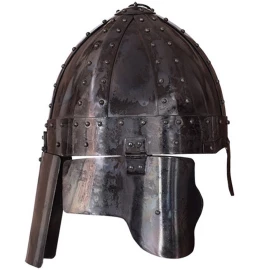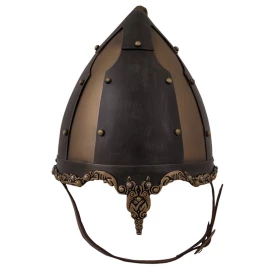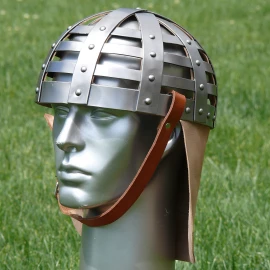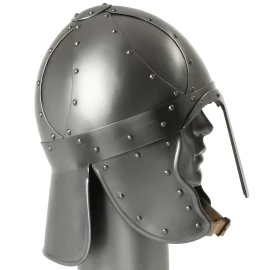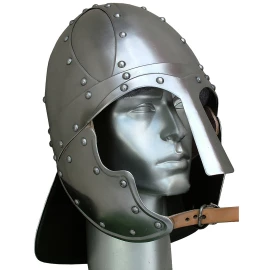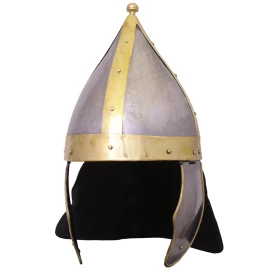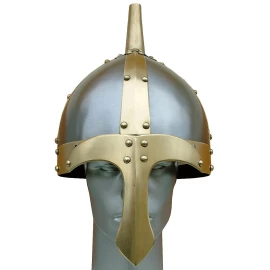Spangenhelms
The Spangenhelm was a popular medieval European combat helmet design of Late Antiquity and the Early Middle Ages. The name Spangenhelm is of German origin. Spangen refers to the metal strips that form the framework for the helmet and could be translated as braces, and -helm simply means helmet. The strips connect three to six steel or bronze plates. The frame takes a conical design that curves with the shape of the head and culminates in a point. The front of the helmet may include a nose protector (a nasal). Older spangenhelms often include cheek flaps made from metal or leather. Spangenhelms may incorporate mail as neck protection, thus forming a partial aventail. Some spangenhelms include eye protection in a shape that resembles modern eyeglass frames, and are thus sometimes called "spectacle helmets". Other spangenhelms include a full face mask.
Filter products
Find exactly the items that suit you.
7 items out of 7 found.
Spangenhelms
The spangenhelm was an effective protection that was relatively easy to produce. Weakness of the design were its partial head protection and its jointed construction. It was replaced by similarly shaped helmets made with one-piece skulls (nasal helms), kettle hats and eventually the Great helm or casque.

